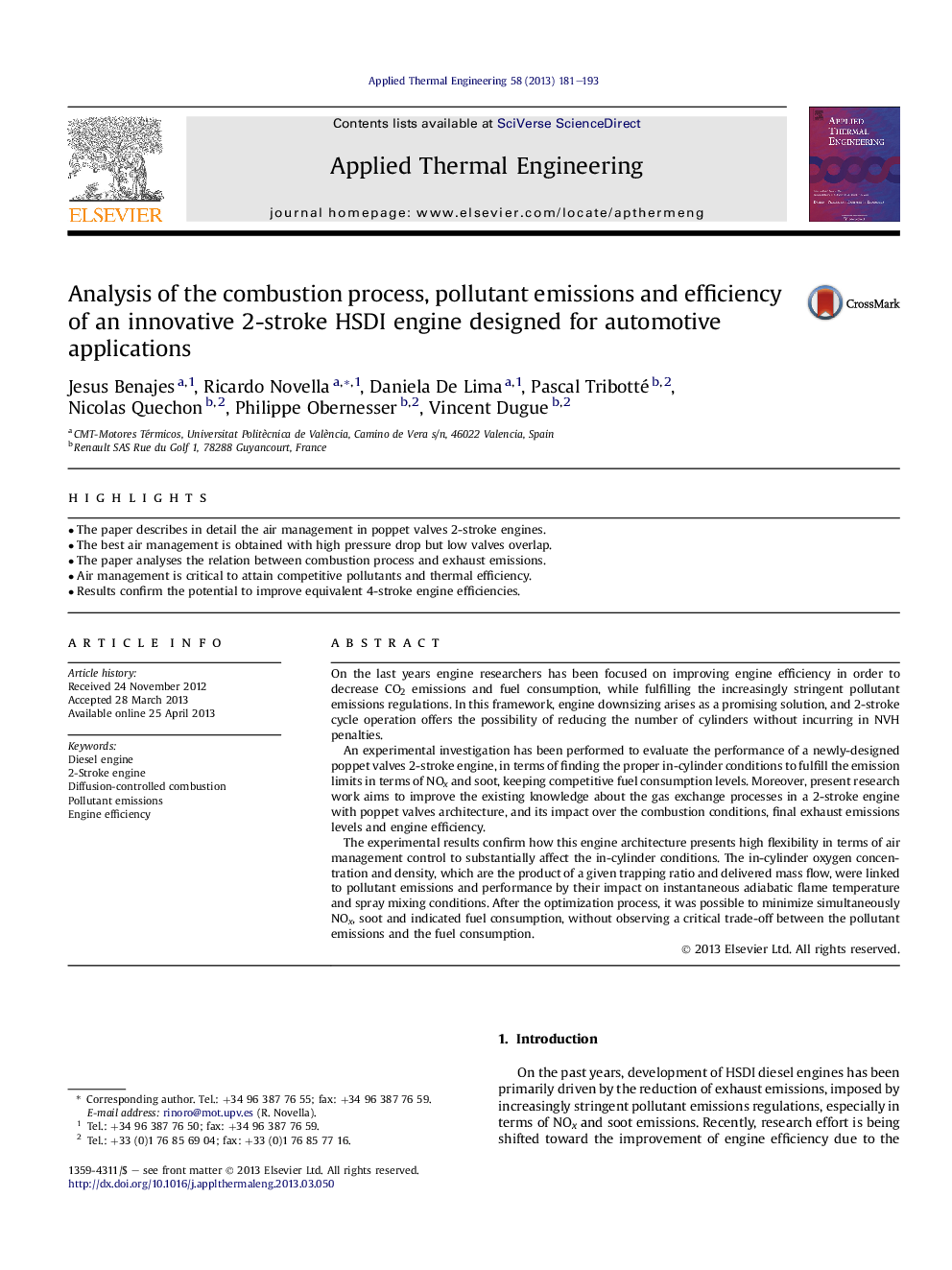| کد مقاله | کد نشریه | سال انتشار | مقاله انگلیسی | نسخه تمام متن |
|---|---|---|---|---|
| 646797 | 1457164 | 2013 | 13 صفحه PDF | دانلود رایگان |

• The paper describes in detail the air management in poppet valves 2-stroke engines.
• The best air management is obtained with high pressure drop but low valves overlap.
• The paper analyses the relation between combustion process and exhaust emissions.
• Air management is critical to attain competitive pollutants and thermal efficiency.
• Results confirm the potential to improve equivalent 4-stroke engine efficiencies.
On the last years engine researchers has been focused on improving engine efficiency in order to decrease CO2 emissions and fuel consumption, while fulfilling the increasingly stringent pollutant emissions regulations. In this framework, engine downsizing arises as a promising solution, and 2-stroke cycle operation offers the possibility of reducing the number of cylinders without incurring in NVH penalties.An experimental investigation has been performed to evaluate the performance of a newly-designed poppet valves 2-stroke engine, in terms of finding the proper in-cylinder conditions to fulfill the emission limits in terms of NOx and soot, keeping competitive fuel consumption levels. Moreover, present research work aims to improve the existing knowledge about the gas exchange processes in a 2-stroke engine with poppet valves architecture, and its impact over the combustion conditions, final exhaust emissions levels and engine efficiency.The experimental results confirm how this engine architecture presents high flexibility in terms of air management control to substantially affect the in-cylinder conditions. The in-cylinder oxygen concentration and density, which are the product of a given trapping ratio and delivered mass flow, were linked to pollutant emissions and performance by their impact on instantaneous adiabatic flame temperature and spray mixing conditions. After the optimization process, it was possible to minimize simultaneously NOx, soot and indicated fuel consumption, without observing a critical trade-off between the pollutant emissions and the fuel consumption.
Journal: Applied Thermal Engineering - Volume 58, Issues 1–2, September 2013, Pages 181–193